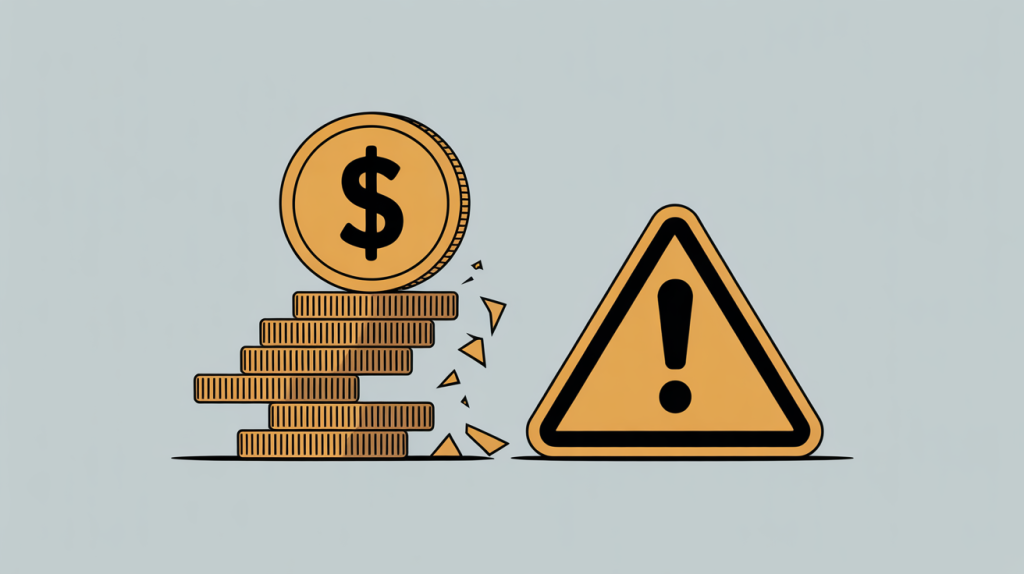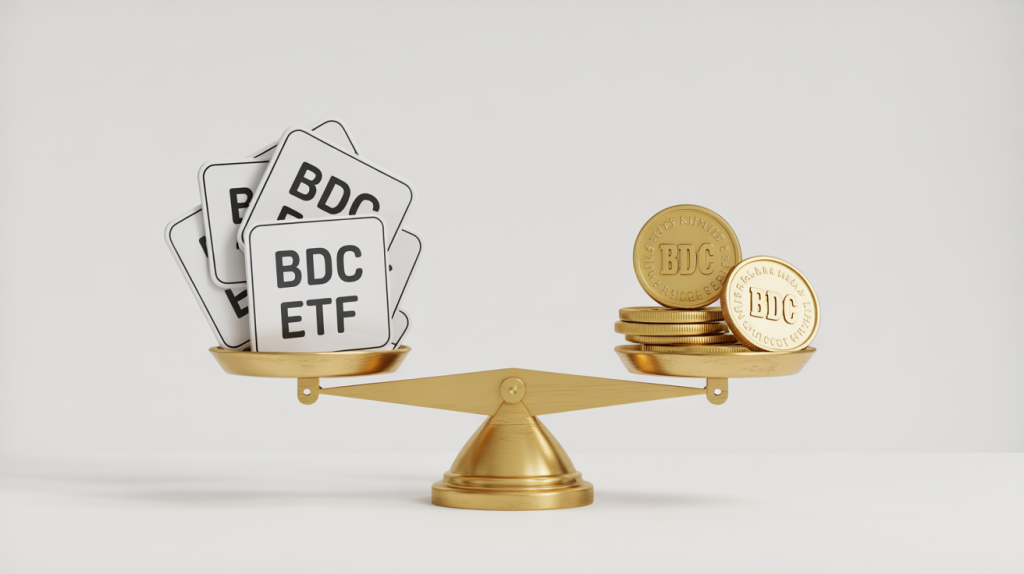
Business Development Companies (BDCs) can look like dividend gold mines. The headline yields are often double or triple what you get from blue-chip dividend stocks or bond funds. But as you already know, the market doesn’t hand out high income without attaching strings. The problem is, these strings are often buried in footnotes, cloaked behind jargon, or completely ignored–until the cracks show up in your NAV and your capital evaporates. If you’re tempted to chase those 9% to 12% yields, take a moment and walk through the four silent risks baked into the BDC structure. Because in investing, what you don’t see coming is what hurts the most.
Net Asset Value Erosion: The Silent Killer of Total Returns
You’ll often see a BDC trading well below its NAV. Most investors assume that’s a bargain. It’s not. Persistent NAV erosion is a red flag, not a feature. Over time, BDCs that constantly issue new shares, pay out more than they earn, or take losses on bad loans see their book value decline. And once NAV starts eroding, the high dividend doesn’t compensate for the capital loss.
This is especially common in externally managed BDCs where dilution is often used to grow the AUM–and by extension, the fee base. You’re left holding a leaky bucket: the dividend keeps coming, but your principal keeps vanishing.
External Management and Perverse Incentives: Who Are They Really Working For?
Here’s where the incentives go sideways. Many BDCs are externally managed. That means the people managing your money don’t work for the company–you’re effectively outsourcing your portfolio to hired guns. These managers get paid a base fee on assets and an incentive fee on profits, but they don’t share in your losses.
By contrast, internally managed BDCs employ their own in-house investment team and tend to be more aligned with shareholder interests. Their compensation is tied more directly to company performance, not just asset growth.
A few examples:
- Externally managed BDCs include names like FS KKR Capital Corp. (FSK), Ares Capital Corp. (ARCC), and Prospect Capital Corp. (PSEC). These tend to have more aggressive fee structures and a history of NAV pressure.
- Internally managed BDCs include Main Street Capital (MAIN) and Capital Southwest (CSWC). These firms often deliver better long-term total returns and more consistent dividend coverage.
The result? A strong motivation to grow the portfolio at all costs, even if it means issuing more equity at a discount to NAV, leveraging up, or stretching the risk profile of loans. These fees are locked in, while your dividend is not.
The best BDCs have internal management and shareholder-aligned incentives. Most don’t.
Portfolio Concentration: One Bad Bet Can Wipe Out Years of Income
Many investors think BDCs are diversified just because they hold dozens of loans. But look closer, and you’ll often find sector overexposure–especially in cyclical industries like energy, retail, or tech services. And in some BDCs, just a handful of positions can account for a disproportionate share of income and capital.
When one of those loans goes sour–and they will in downturns–it drags NAV, net investment income, and dividend coverage down with it. Suddenly, that stable income stream becomes a payout cut waiting to happen.
Prospect Capital Corporation (PSEC) is a cautionary example within the BDC sector. PSEC has encountered notable challenges, including a 25% dividend reduction in November 2024, declining net investment income, and a 12.1% year-over-year decrease in NAV per share to $7.84 as of December 31, 2024. These issues underscore the risks associated with high-yield BDCs, particularly those with aggressive growth strategies and less transparent management practices.
Liquidity Crunch: The Exit Door Vanishes When You Need It Most
BDC shares trade on public exchanges, which gives the illusion of liquidity. But when market conditions tighten–like during COVID crashes, financial contagion, or rate spikes–BDCs can get hammered. Spreads widen, asset values drop, and market prices can fall 20% or more in a matter of days.
Worse, the loans they hold are private and illiquid. If redemptions rise or the BDC needs cash, there’s no quick exit. They’re locked into assets that may not have an active market. In a panic, this creates a downward spiral: lower asset values, shrinking NAV, and possibly a dividend cut just when you’re counting on the income the most.
Know the Risks Before the Market Forces You To Learn Them
BDCs are not bad investments. In fact, some of them can be excellent tools for income generation in the right hands and market conditions. But if you chase yield without understanding structure, you’ll likely be holding the bag when things turn south. The high payout doesn’t come free. It comes wrapped in complexity, risk, and fragility.
Before you load up on BDCs, ask yourself: Do I trust the incentives? Can I live with a drawdown? Will I be okay if the dividend gets cut in half?
If you’re unsure, you’re not alone. And if you’d like help navigating high-income opportunities that don’t put your capital at undue risk, consider joining our Premium membership or Founder’s Club where we dig into these questions every day.

Shailesh Kumar, MBA is the founder of Astute Investor’s Calculus, where he shares high-conviction small-cap value ideas, stock reports, and investing strategies.
His work has been featured in the New York Times and profiled on Wikipedia. He previously ran Value Stock Guide, one of the earliest value investing platforms online.
Subscribe to the Inner Circle to access premium stock reports and strategy insights.
Featured in:



